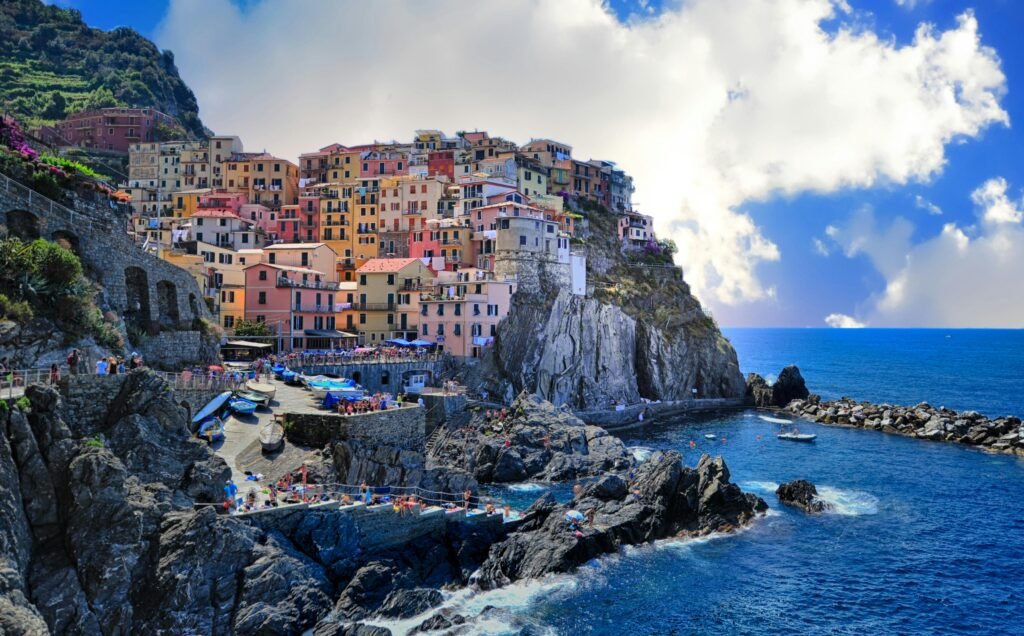Introduction to UNESCO World Heritage Sites
UNESCO World Heritage Sites represent a remarkable recognition of places that hold exceptional cultural or natural significance. Established by the United Nations Educational, Scientific and Cultural Organization (UNESCO), this initiative aims to identify, preserve, and promote locations that are of outstanding value to humanity. The designation of these sites is based on a rigorous selection process, where each nominated site must meet one or more of ten specific criteria. These criteria encompass various aspects, including architectural brilliance, historical importance, and unique biodiversity.

The significance of UNESCO World Heritage Sites extends beyond their aesthetic appeal. They are instrumental in fostering cultural identity, promoting tourism, and generating economic opportunities for surrounding communities. By preserving these sites, we protect rich histories and biological diversity that have been handed down through generations. These heritage sites capture the essence of human creativity and the relationship between people and their environment. They serve as a testament to the significance of cultural traditions and natural ecosystems, being living embodiments of our shared heritage.
UNESCO plays a critical role in the protection and preservation of these invaluable places. The organization provides expert guidance and conservation strategies, facilitating collaboration among countries to safeguard locations under threat from urbanization, climate change, or conflict. The ultimate goal of UNESCO’s efforts is to ensure that future generations can experience the richness of our global heritage, thriving in environments enriched by both human ingenuity and natural wonder. Thus, the importance of UNESCO World Heritage Sites cannot be overstated, as they provide a vital link to our past while informing our future.
Cultural Significance of UNESCO Sites
UNESCO World Heritage Sites serve as vital touchstones that encapsulate the cultural richness and diversity of global civilizations. These sites are not merely beautiful landscapes or artifacts; they embody the artistic, social, and historical narratives that define various cultures. By recognizing and preserving these locations, UNESCO plays a critical role in safeguarding humanity’s shared heritage, allowing future generations to appreciate and learn from it.

An excellent example of a UNESCO World Heritage Site that illustrates deep cultural significance is the historic city of Venice, Italy. Known for its intricate canals and unique architectural styles, Venice showcases the ingenuity of human engineering and design. Its architecture, encompassing elements from Byzantine, Gothic, and Renaissance styles, reflects the city’s history as a significant trade and cultural center. Similarly, the ancient city of Petra in Jordan highlights the remarkable achievements of the Nabataean civilization, with its grand temples and intricate water conduit system, representing a fusion of cultural influences and advanced engineering.
Cultural practices also flourish within UNESCO World Heritage Sites, as seen in the traditional practices of the indigenous communities in places like the Sacred City of Caral-Supe in Peru. Here, archaeological evidence reveals centuries-old agricultural methods and social structures that continue to influence contemporary Andean communities. Such sites emphasize the importance of traditional knowledge and its ongoing contributions to cultural identity.
By preserving sites rich in cultural significance, we ensure that the stories of various civilizations remain vibrant and accessible. This not only fosters a sense of belonging among local populations but also promotes a greater understanding and appreciation for the intricate tapestry of global culture. Through their open invitation for exploration and learning, UNESCO World Heritage Sites play an integral role in enhancing our collective cultural identity.
Historical Value of Heritage Sites
UNESCO World Heritage Sites are invaluable assets that encapsulate significant chapters of human history. These sites serve not merely as landmarks of beauty but as repositories of our collective past, offering insights into the civilizations that shaped our world. They act as tangible reminders of historical events, societal changes, and cultural milestones.
For instance, consider the ancient city of Pompeii in Italy. Preserved under volcanic ash for centuries, Pompeii provides a unique glimpse into Roman life circa 79 AD. The well-preserved ruins allow historians and visitors to appreciate the urban planning, architecture, and daily life of its inhabitants, serving as a vital resource for education and cultural understanding. Similarly, the Pyramids of Giza are not only awe-inspiring structures but also serve as symbols of Ancient Egyptian civilization, reflecting their architectural ingenuity and religious beliefs.
Moreover, Colonial Williamsburg in the United States stands as a hallmark of colonial history, representing the socio-political climate that shaped the early years of America. Through its restored buildings and living-history experiences, visitors gain insight into the struggles and achievements of the country’s founders, providing context to the ideals of democracy and freedom. The role of such heritage sites extends beyond mere preservation; they are instrumental in fostering reflections on historical events that helped to define nations and peoples.
Revolutionary movements, such as the Bastille in France, highlight national struggles for freedom and justice. This site marks the beginning of the French Revolution, symbolizing the fight against tyranny and the quest for civil rights, serving to educate current and future generations about the complexities of governance and societal change.

In conclusion, UNESCO World Heritage Sites hold profound historical value, serving as living testaments to our shared human narrative. They not only preserve ancient stories but also facilitate learning, fostering a sense of identity and collective memory essential for understanding our position in today’s world.
Ecological and Biodiversity Importance
UNESCO World Heritage Sites play a vital role in the preservation of our planet’s ecological integrity and biological diversity. Many of these designated sites encompass unique ecosystems and habitats that are crucial for the survival of numerous species. By protecting these areas, UNESCO not only safeguards beauty but also biodiversity, which is essential for maintaining ecological balance and resilience against environmental changes.
For instance, the Great Barrier Reef in Australia is not only a natural wonder but also a critical habitat for countless marine species. This UNESCO World Heritage Site is significant for biodiversity as it supports a complex interrelation between flora and fauna, contributing to the health of marine ecosystems. Similarly, Yellowstone National Park in the United States is recognized for its rich biodiversity, including various mammals, birds, and plants that are integral to the ecological fabric of the region. Such sites serve as invaluable resources for scientific research and provide critical insights into ecosystem dynamics.
In light of these considerations, it is evident that UNESCO World Heritage Sites are crucial in promoting ecological and biodiversity conservation. The safeguarding of these locations ensures the protection of myriad species and their habitats, while simultaneously providing significant benefits to the environment and the planet as a whole.
Economic Impact: Opportunities and Challenges
UNESCO World Heritage Sites serve as significant catalysts for economic development, primarily through tourism. These locations draw millions of visitors each year, generating substantial revenue for local economies. The infusion of tourists often leads to job creation in various sectors, including hospitality, transportation, and retail, fostering an environment where local businesses can thrive. Additionally, the recognition as a World Heritage Site elevates the global profile of a destination, attracting not only casual travelers but also scholars and conservationists interested in the cultural and natural significance of these locations.
However, while the economic opportunities presented by UNESCO World Heritage Sites are considerable, they also come with inherent challenges. Increased visitor numbers can lead to overexploitation of natural resources and degradation of cultural heritage, compromising the very qualities that make these sites worthy of recognition. In recent years, several World Heritage Sites have reported issues stemming from visitor overcrowding, which can cause significant wear and tear on infrastructure and natural landscapes, ultimately diminishing the quality of the experience for future tourists.
To navigate these challenges, responsible tourism practices must be emphasized to ensure the sustainability of these precious sites. This includes implementing measures such as visitor caps, promoting off-peak travel, and raising awareness about the importance of conservation among tourists. Local governments and organizations play a crucial role in developing policies designed to balance the economic benefits of tourism with the preservation of cultural and natural heritage. By fostering collaboration among stakeholders—ranging from local communities to government entities—UNESCO World Heritage Sites can effectively harness their economic potential while safeguarding their unique attributes.
Threats Facing UNESCO World Heritage Sites
UNESCO World Heritage Sites, recognized for their cultural and natural significance, face various threats that jeopardize their preservation. Urbanization is a primary concern, as expanding cities often encroach upon these historical locations. As urban areas grow, the infrastructure needed to support populations can lead to pollution, overpopulation, and displacement of traditional lifestyles. For instance, the ancient city of Pompeii in Italy has suffered from increased visitor numbers and surrounding urban development, which pose risks to its delicate structures and archaeological integrity.
Climate change is another pervasive threat affecting UNESCO World Heritage Sites across the globe. The rising temperatures and extreme weather events can lead to physical degradation, particularly for coastal sites vulnerable to erosion and flooding. For example, the Great Barrier Reef in Australia, a World Heritage Site renowned for its biodiversity, has experienced significant coral bleaching due to rising ocean temperatures. These environmental changes not only threaten the physical space but also the flora and fauna that constitute the heritage value of these locations.
Furthermore, armed conflict poses a dire risk to World Heritage Sites, as seen in the destruction of the ancient city of Palmyra in Syria. Situations of war often lead to neglect and intentional vandalism, erasing invaluable historical testimony. The loss extends beyond physical destruction to the intangible heritage of the communities that hold these sites sacred. This neglect and mismanagement can have long-term impacts, leading to irreversible changes to sites that hold global importance.
To preserve these unique cultural and natural legacies, it is imperative to address the aforementioned threats through coordinated international efforts, sustainable management practices, and community engagement. Protecting UNESCO World Heritage Sites is key not only for their inherent value but also for future generations to appreciate, learn, and draw inspiration from these remarkable places.
The Role of Local Communities in Preservation
Local communities are indispensable in the preservation of UNESCO World Heritage Sites, as they possess an intrinsic connection to the cultural and natural assets that define these locations. Community engagement not only fosters stewardship and a sense of ownership but also facilitates the transmission of traditional knowledge and practices essential for effective heritage management. In many instances, the active participation of local populations has proven fundamental in championing initiatives aimed at both conservation and the promotion of sustainable tourism.
The involvement of community members ensures that preservation efforts are grounded in the context of local customs and priorities, which often leads to more effective and tailored strategies. For example, communities may organize volunteer days for site clean-ups, promote educational workshops, or facilitate guided tours that are both informative and respectful of local traditions. Such initiatives not only mitigate the impact of tourism on these sites but also empower residents, creating economic opportunities while instilling pride in their cultural heritage.
Moreover, successful case studies around the globe illustrate the positive outcomes that arise from involving local communities in UNESCO preservation initiatives. For instance, the Maasai community’s guardianship of the Ngorongoro Conservation Area in Tanzania highlights how indigenous knowledge can enhance conservation strategies. Another example is the partnership between local artisans and cultural organizations in Italy that promote traditional craftsmanship, thereby preserving their heritage while creating viable economic pathways.
Ultimately, fostering collaborative relationships between local communities and heritage authorities is essential for achieving long-term sustainability of UNESCO World Heritage Sites. Through meaningful engagement, local populations can play a pivotal role in mitigating threats posed by both environmental changes and increasing tourism pressures, ensuring that these invaluable sites endure for future generations to appreciate. This ongoing dialogue underscores the notion that the preservation of cultural heritage is a collective responsibility that thrives on active participation.
International Collaboration and Legal Frameworks
The protection and promotion of UNESCO World Heritage Sites are based on a robust framework of international cooperation and legal agreements. Central to these efforts is the 1972 World Heritage Convention, which has been ratified by over 190 countries. This treaty aims to identify and preserve cultural and natural heritage of outstanding universal value, encouraging states to adopt measures to safeguard these significant sites. By aligning national policies with global standards, member states not only enhance their heritage management practices but also contribute to the collective effort of conserving humanity’s shared history.
International collaboration extends beyond mere agreement; it encompasses a network of partnerships between various stakeholders, including governments, non-governmental organizations, and local communities. These partnerships enable the sharing of resources, knowledge, and expertise essential for the effective preservation of World Heritage Sites. For instance, initiatives like UNESCO’s World Heritage Volunteers program aim to involve youth in conservation activities, fostering a sense of ownership and responsibility towards these globally significant locations.

Additionally, legal frameworks tailored to specific regions or sites play a crucial role in safeguarding their integrity. National parks and heritage laws often accompany UNESCO designations, providing legal backing for protection against threats such as urbanization, neglect, or environmental degradation. The establishment of buffer zones around sites also forms part of this comprehensive approach, ensuring that surrounding areas are managed to mitigate potential impacts on the heritage site itself.
Moreover, international agreements, such as the Convention on Biological Diversity and the Convention for the Safeguarding of the Intangible Cultural Heritage, complement the World Heritage Convention by addressing specific aspects of heritage protection. Through these diverse legal instruments and collaborative frameworks, UNESCO facilitates a cohesive strategy that underpins the ongoing effort to preserve the world’s most treasured places for future generations, making international cooperation essential in the realm of heritage conservation.
Conclusion: The Case for Protection and Advocacy
UNESCO World Heritage Sites represent a vital link to our collective history and cultural identity. Throughout this blog post, we have explored the multifaceted significance of these sites, emphasizing that they are much more than mere picturesque locations; they embody our shared heritage and serve as critical resources for historical education. The preservation of these sites is not solely an act of conservation but a commitment to maintaining the narratives that shape our societies.
Moreover, these exceptional sites contribute to biodiversity conservation, supporting ecosystems that are crucial for environmental health. The natural and cultural landscapes designated as UNESCO World Heritage Site often host unique species and habitats, underscoring the need for thoughtful stewardship. The relationship between cultural sites and the surrounding environment is symbiotic, emphasizing that sustainable practices in conservation can protect both our history and our natural world.
Economically, UNESCO World Heritage Sites can be significant assets, attracting tourism that boosts local communities and creates jobs. However, this economic potential must be balanced with preservation efforts to ensure that the integrity of these sites is maintained for future generations. Advocating for the protection of UNESCO World Heritage Sites requires a collective commitment from individuals, communities, and governments. By supporting preservation initiatives and engaging with organizations dedicated to these causes, we can play a part in safeguarding our shared heritage.
In summary, the case for the protection and advocacy of UNESCO World Heritage Sites is compelling. These places are vital to our cultural identities, serve essential educational functions, promote biodiversity conservation, and offer economic opportunities. It is our responsibility to ensure their protection, so they continue to enrich our lives and inform future generations.




This is a topic that is close to my heart… Thank you! Exactly where are
your contact details though?
contact details for what?
Saved as a favorite, I really like your blog!